Being noticeably different from the crowds can be tricky in a world where everyone competes for attention. And considering YouTube is among the most e
Being noticeably different from the crowds can be tricky in a world where everyone competes for attention. And considering YouTube is among the most effective platforms for audio content today, it stands to reason to include that medium in your plans. But ensure you’re offering something that no one else does. So, can you start a podcast on YouTube Channel? Of course, you can. This post will tackle the fundamentals of starting a podcast afresh, with YouTube being your ultimate goal.
Why You Should Start a Podcast On YouTube
YouTube is the largest platform podcasting-wise, bearing 24.2% of listeners, with Spotify in second place with 23.8%, followed by Apple with 16%. With a huge number of people resorting to YouTube as their source for podcasts, it’s a great idea to access that potential audience. Other benefits of publishing your podcast on YouTube:
- reach listeners who prefer watching videos
- you can maximize real-time review from the comments section
- allows you to pitch episodes with shorter clips
- it has a detailed analytics report
- has a compelling recommendation algorithm that brings your show in front of people following a similar niche/topic
 Setting Up A Podcast On YouTube
Setting Up A Podcast On YouTube
Create A YouTube Podcast Channel
First, you have to create a YouTube podcast channel to kick off your video podcasting journey.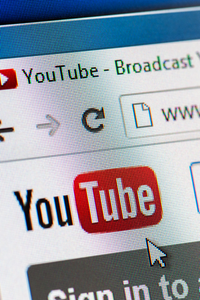 Follow these instructions in creating your channel:
Follow these instructions in creating your channel:
- Go to the website of YouTube.
- Click ‘Sign In’ in the top right corner of the page. Then log in with the Google account you’d want your channel to be linked with.
- If you don’t have a Google account, click ‘Create Account’ and follow the directions to create one.
- Then head over to your YouTube settings. Then select ‘Create A Channel.’
- Fill in the information needed (including your date of birth, country, gender, and preferred privacy settings).
- Remember to customize your YouTube channel.
- Click the ‘All done’ button to complete the setup.
Make sure your YouTube channel looks seemly. Have a few ready videos to publish immediately, so your channel does not appear too empty.
What Do You Need To Start A Podcast On YouTube
Investing in the proper equipment when starting a podcast on YouTube is vital. This will guarantee that both your video and audio quality are of the highest quality, contributing to your podcast’s success. 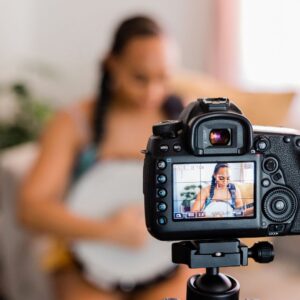
What podcast video gears and software are the fundamentals in creating a video podcast if you’re only starting?
|
Other equipment you may want to consider:
|
Because you’re worried about podcasting, or making dozens of video dialogues across the network, you’ll need to have skilled-level software. Many new podcasters resort to GarageBand or Audacity.
 Making Your Podcast YouTube Ready
Making Your Podcast YouTube Ready
Let’s imagine you’re already creating your podcast audio, which is good. But you can make that even better when you place a camera in your room, then record your audio. Follow these best techniques, and you’ll be in the right direction to multiplying your audience in a jiffy.
Record Your Episodes
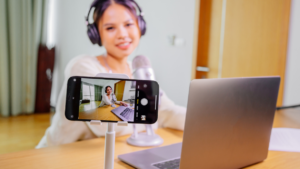
When getting ready to record, find a quiet spot with good lighting and few interruptions. Make sure your gear is all set for the best sound and visuals, particularly if you’re going live. If you don’t have a studio, you can design a cool studio in your condo/home. You need your place to be equipped to record crystal-clear audio and be delightful to the eye.
Consider the setting behind you. Ensure it doesn’t distract your viewers. This might mean cleaning up any mess in your room or using a backdrop to hide clutter. You could have something like a poster or an award on display, but make sure it doesn’t steal focus from you or your presentation.
Try to capture the best possible lighting for clarity. Similarly, aim for clear sound quality by minimizing background noise such as barking dogs, air conditioning units, or children playing nearby. To check audio and video quality along with lighting conditions, record a short 10-second clip beforehand.
While recording, stick to your topic outline, articulate well, and keep looking at the camera. This will help make your video podcast episodes more captivating and polished.
Edit Your Video
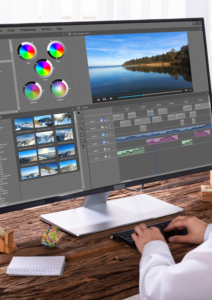
There are plenty of video editing software options available, including Reaper, Adobe Audition, Audacity and GarageBand. Depending on your budget, skill level and the features you’re looking for in an editor, one of these might be perfect for you.
One golden rule when it comes to video editing is always ensuring your audio matches up with your visuals. Decide which parts of the footage you want to keep or get rid of and consider changing up the order if it makes sense. Also think about how to make your content more engaging – adding animations can help prevent viewers from getting bored.
It’s also crucial that your computer has enough memory and storage space for large file sizes. A minimum of 8GB RAM is recommended but 32GB will give optimal performance. If internal storage is limited, external hard drives can provide a helpful boost in capacity.
Create shorter highlight clips
You can divide each podcast episode into smaller video clips and publish them individually, together with the full-length episode. This is ideal for exposure because it enables you to aim for many different keywords from one unique part of the content. Ensure the video title and description includes the keyword for which you like the clip to be discovered. Clips also help bring more audience toward the full-length videos.
Add timestamps
Improve audience retention by adding timestamps to your video descriptions. These timestamps direct viewers conveniently to certain parts of your videos.
Publish Podcast VIA RSS
To set up an RSS feed for your YouTube podcast, here’s a simple guide:
- Head over to YouTube Studio and select Create > New Podcast > Submit RSS Feed. Make sure you read through the terms of service for using the RSS Ingestion Tool and agree.
- The on-screen instructions will walk you through the process. Just click Next when ready.
- You’ll need to input your RSS feed URL next. If you’ve hidden your email address in your privacy settings, make sure to switch those off temporarily from your podcast host settings before proceeding. Once done, hit Next.
- To confirm it’s really you making these changes, YouTube will send a verification code which you need to retrieve from the email linked with your RSS feed. Enter this code into the provided text box and then click Verify.
Next up, decide on the episodes you wish to upload on YouTube. Here are your choices:
- All existing episodes: This is an ideal choice for most podcasters.
- Episodes published since a specific date: Opt for this if you’ve rebranded and want only the recent ones to be seen. It’s also useful if some episodes have already been uploaded by hand.
- Only future episodes: If all of your previous podcasts are manually uploaded, there’s no need to repeat that laborious process. So, just go with this one.
Create custom thumbnails
Creating colorful YouTube thumbnails can immediately capture people’s attention and help you distinguish your podcast on a medium jammed with normal thumbnails all needing views. Canva is a popular tool to help create thumbnails. You can effortlessly personalize your thumbnail using its easy-to-navigate dashboard.
Some ideas to remember when you create a thumbnail for your video:
- Clear, consistent branding
- Show your face to build an emotional connect
- Reduce your text word count, but make it stand out
- Avoid redundancy in the title
- Use the same colors and fonts
How To Monetize Your Video Podcast

The most common way to monetize videos is through the YouTube Partner Program (YPP). However, to qualify for monetization, you must have:
- 4,000 watch hours over the last 12 months
- at least 1,000 subscribers on your channel.
Other ways to earn money on YouTube:
- Paid Sponsorships
- Advertising
- Product Promotions
- Donations
- Channel Memberships
Stuff you can do to your content that can boost the success of your podcast:
– Upload videos longer than 10 minutes (increasing viewing time, hence increasing the number of ads Youtube can display and the sum of money Youtube is paying for your video content)
time, hence increasing the number of ads Youtube can display and the sum of money Youtube is paying for your video content)
– Include common keywords in the title
– Add the URL of your social media
– Lead traffic to your website through your videos
Conclusion
YouTube can be a true asset in winning a podcast audience. It’ll help you reach more people, even those who aren’t mainly following audio podcasts. Learning how to start a podcast on YouTube Channel is quite easy! But you need to exert some effort into your work. Make quality videos, and devote enough time to the thumbnails, titles, and descriptions. Furthermore, monitor the statistics to determine where and how you can be better at it. If you continue going this way, you’re on the right track to owning a successful podcast on YouTube.
Anyone can start a podcast on YouTube. If you need a complete guide, go see our post on how to start a podcast.
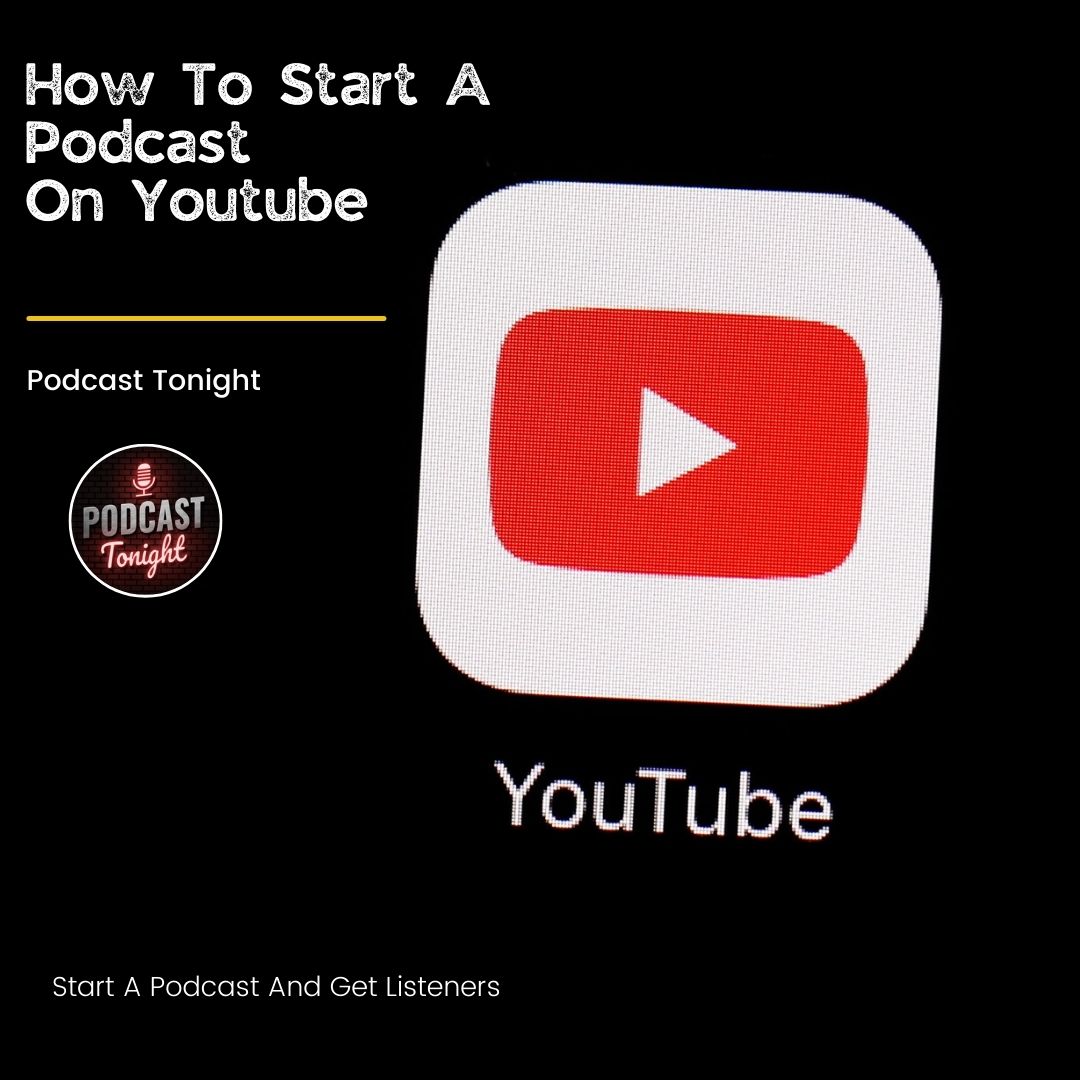
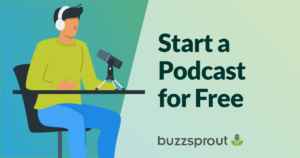
COMMENTS
[…] The show can’t help it if there are listeners who find Bill Simmons a bit pretentious. And why does he keeps on talking about gambling? They are ridiculous and unbearable. The podcast has slipped into nothing more than Simmons explaining how his awful choices lost him money. His discussions with his buddies and guests are entertaining to hear. However, sometimes the episodes are too long, stretching for as long as two hours. And being a Boston sports fanatic, he spends way too much divulging the best teams for him over others. Also Read: How To Start A Podcast On YouTube […]